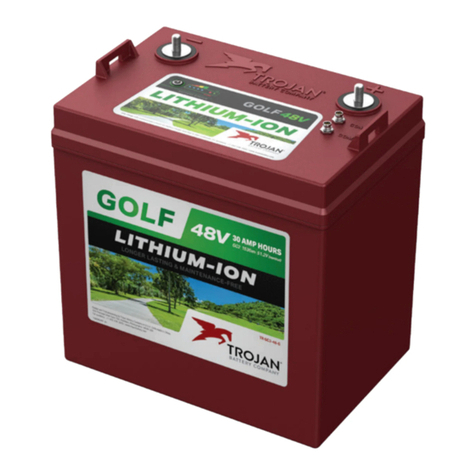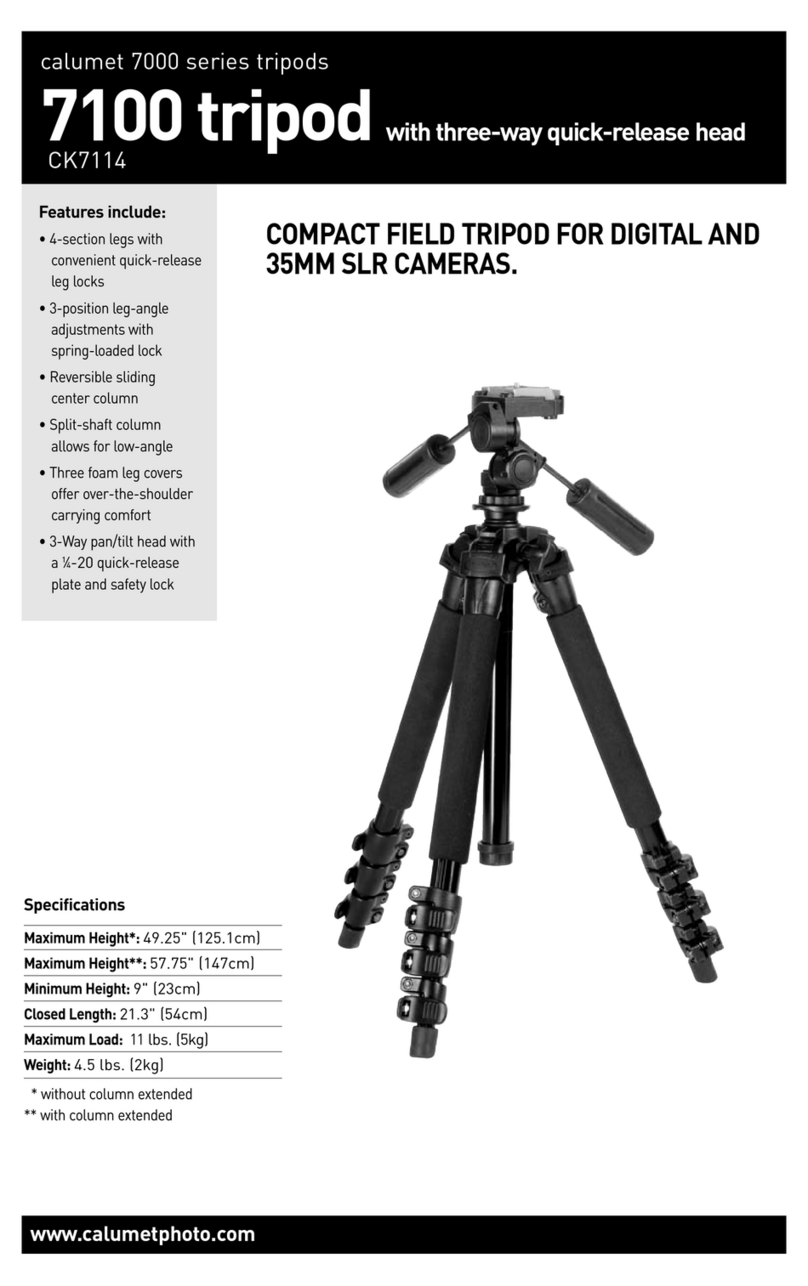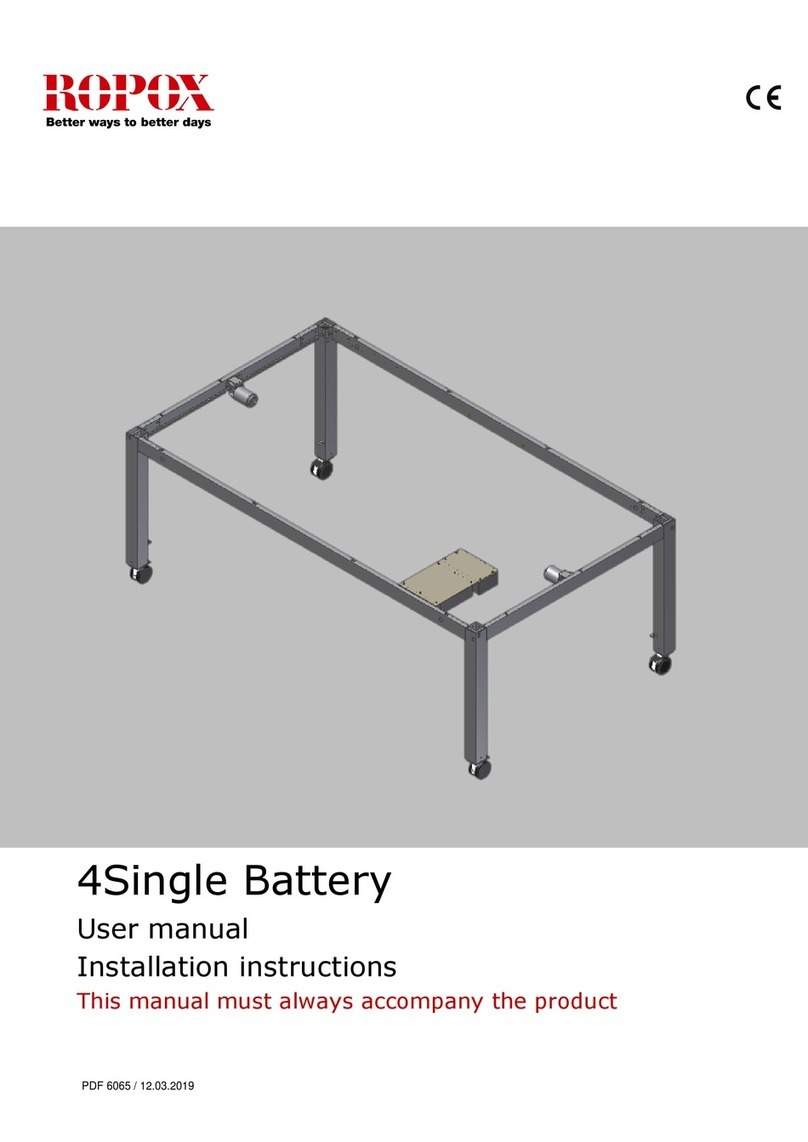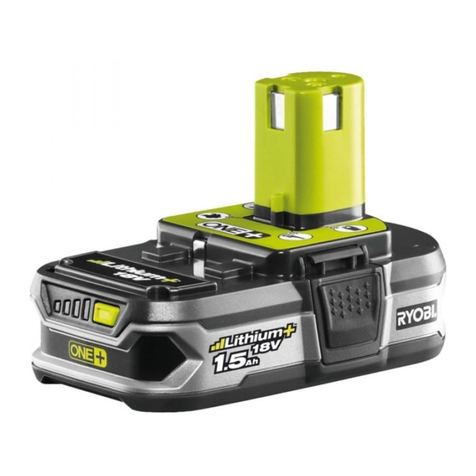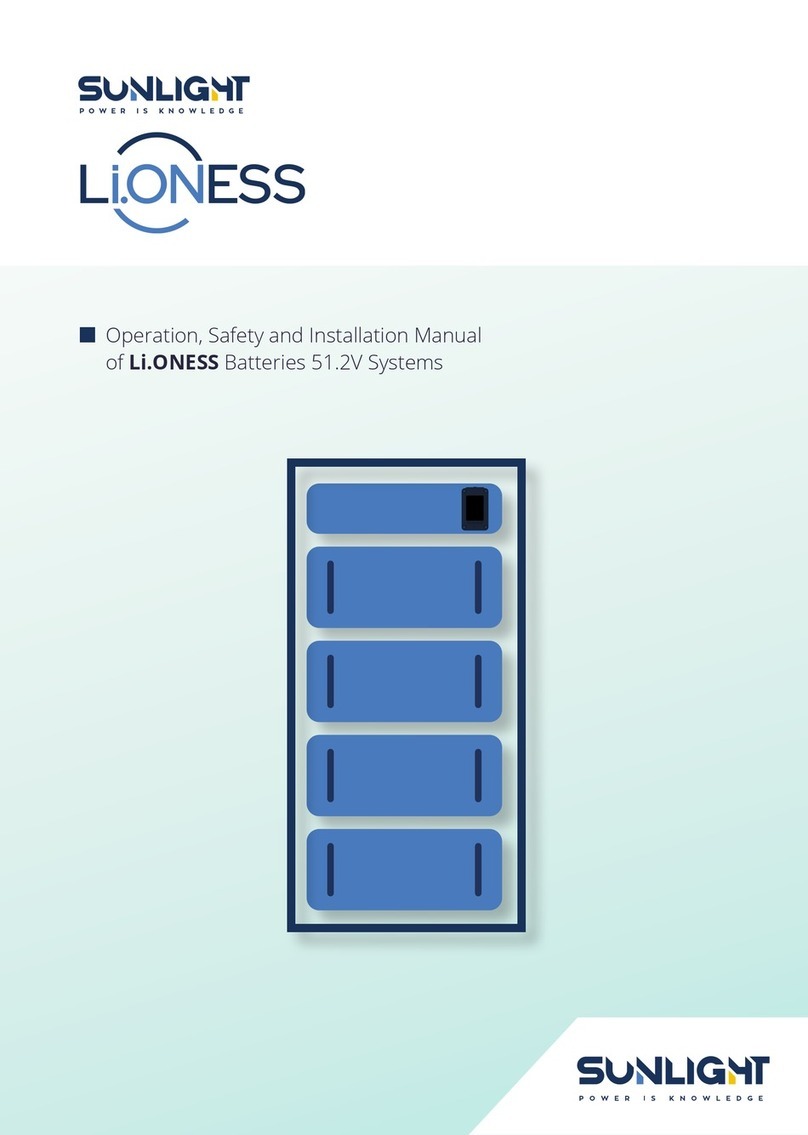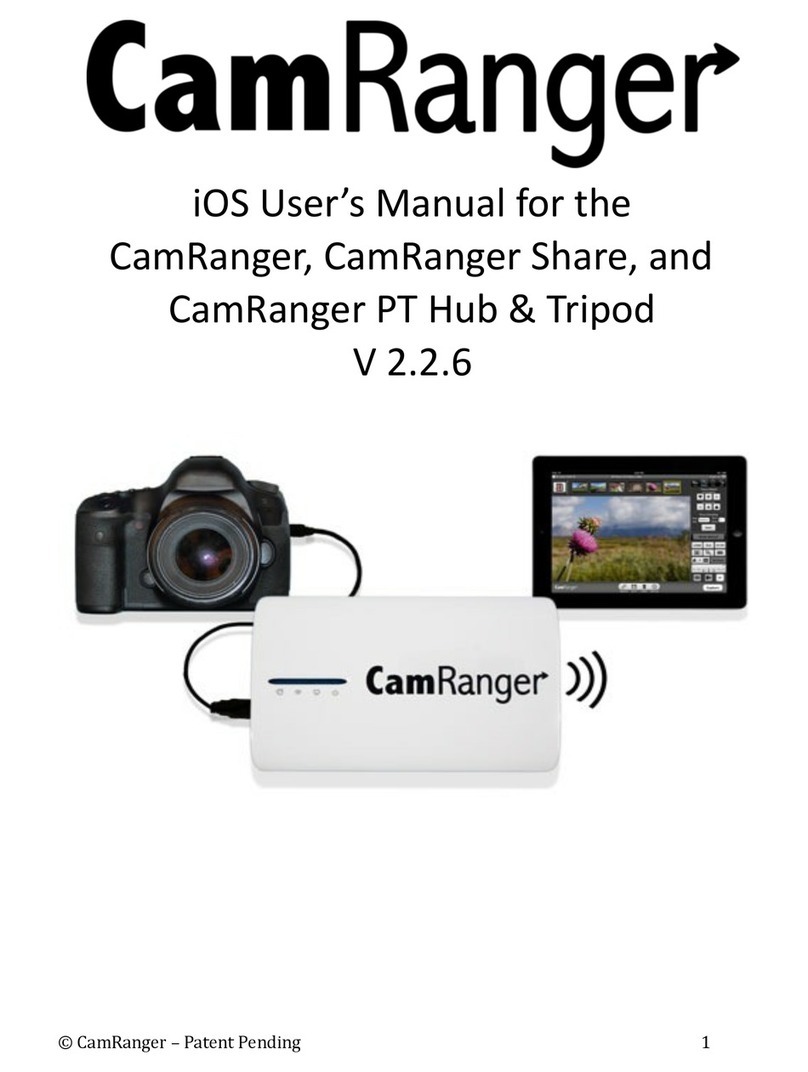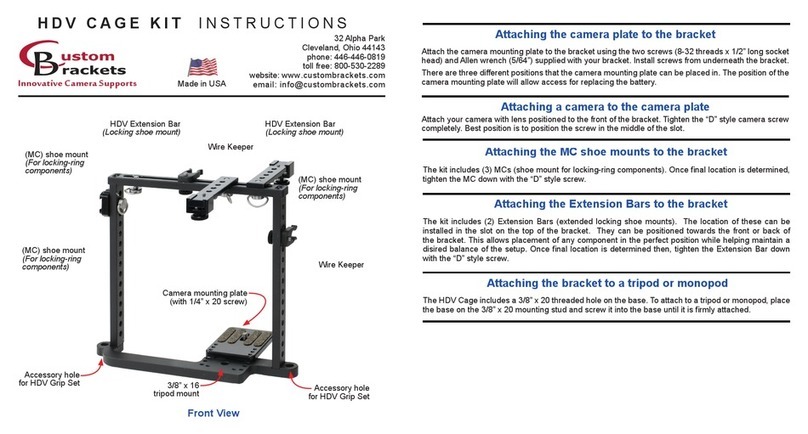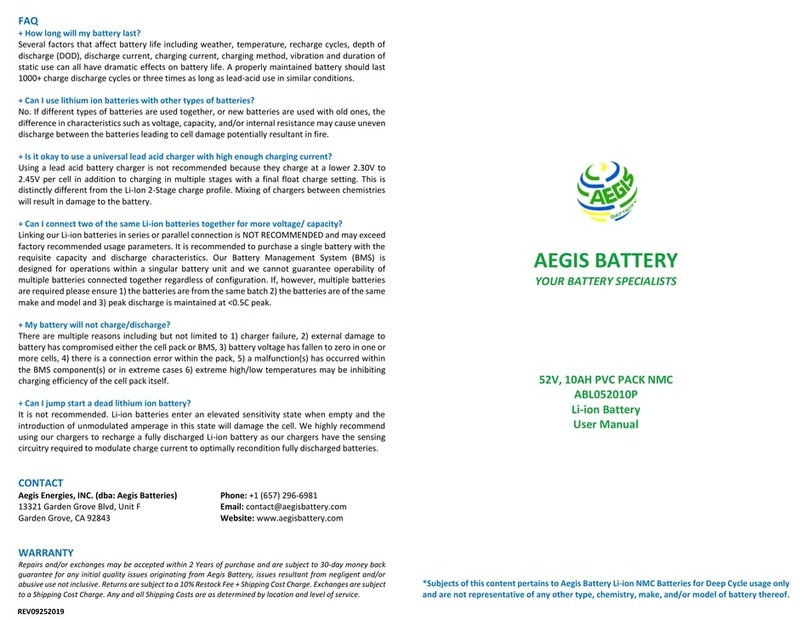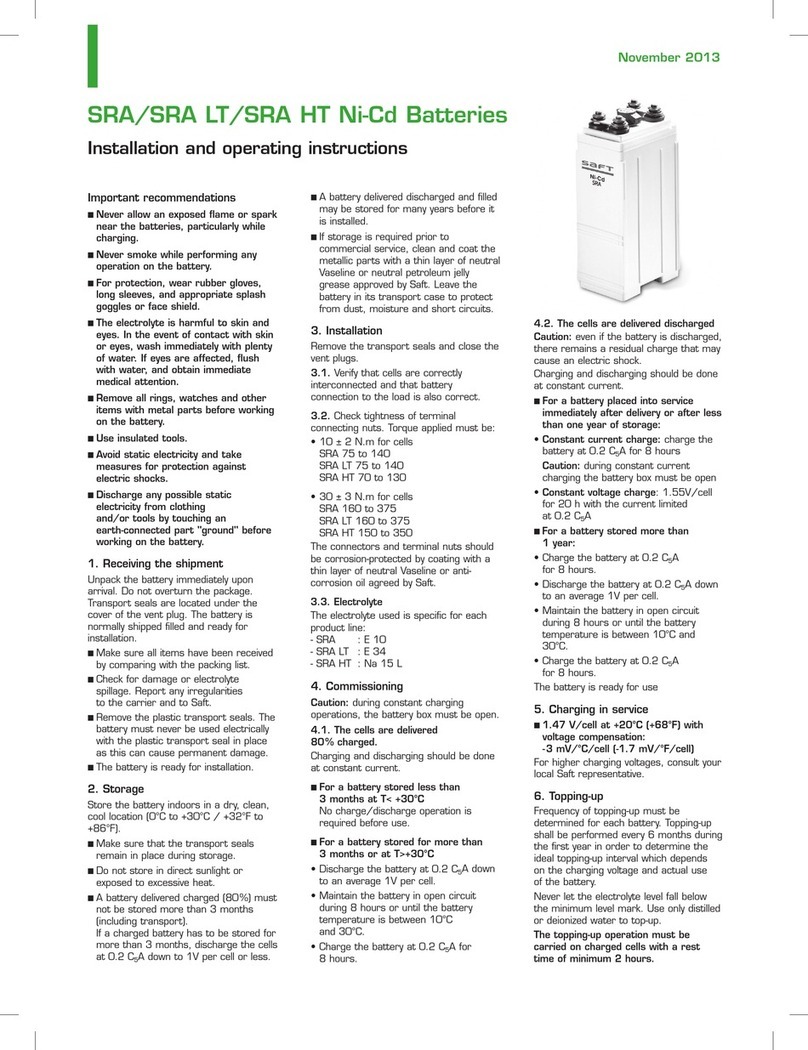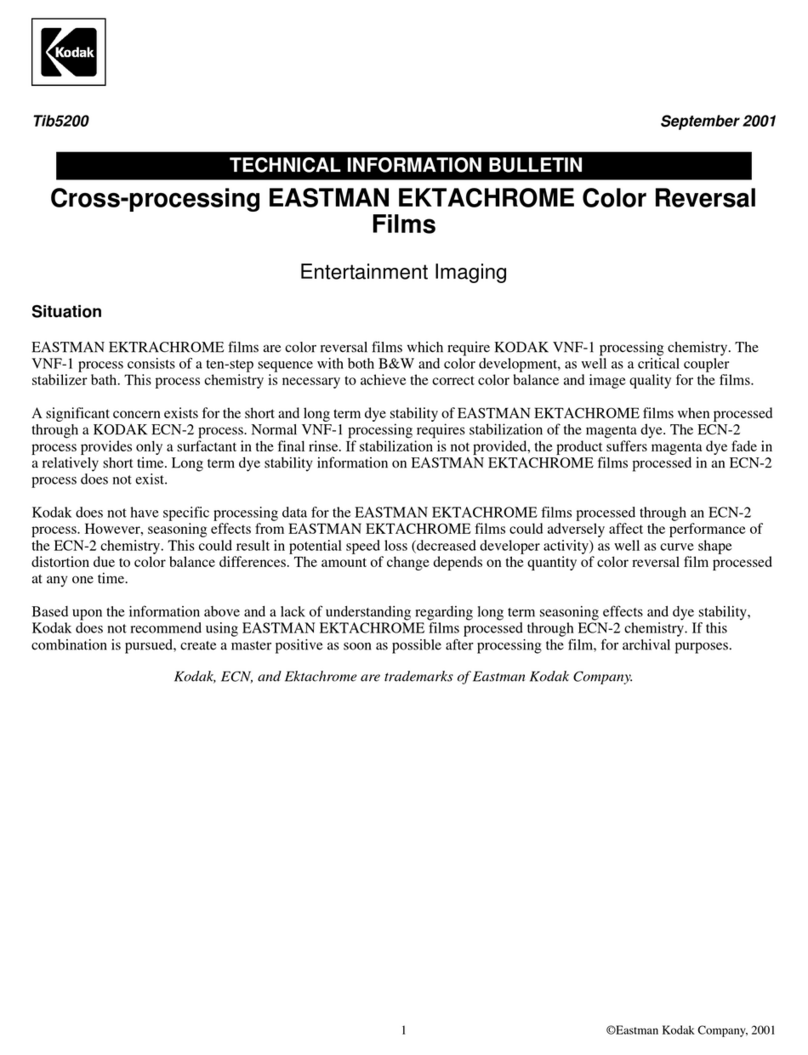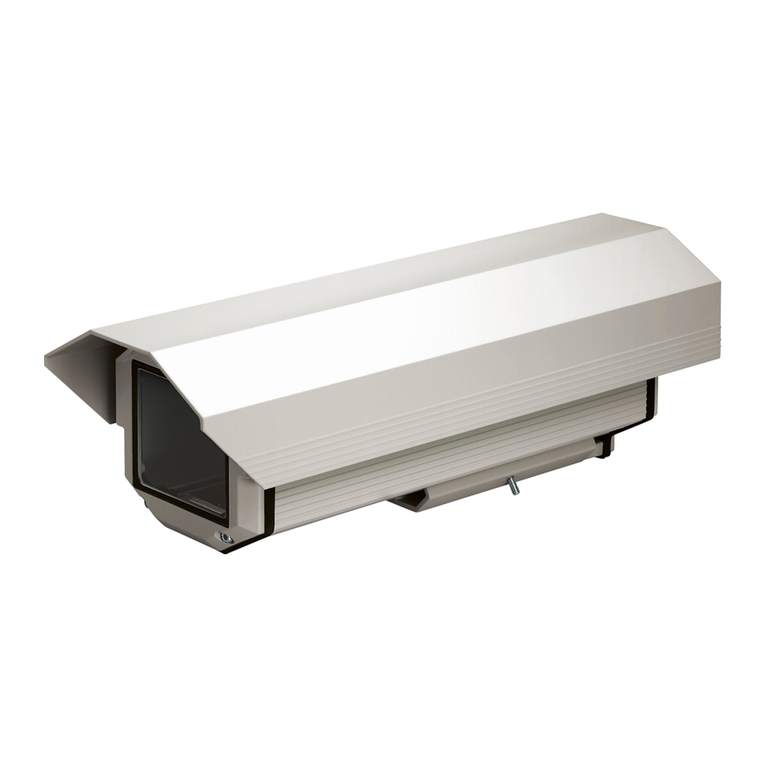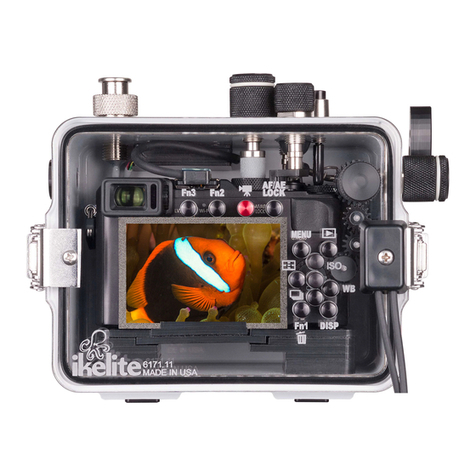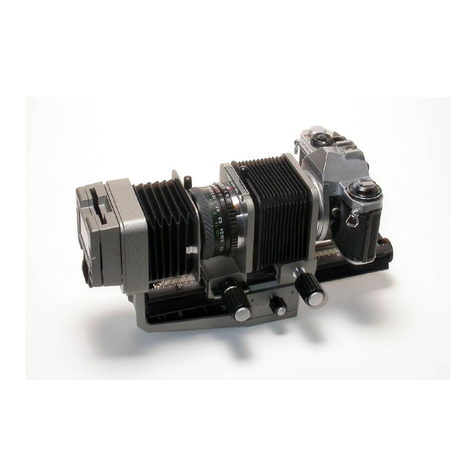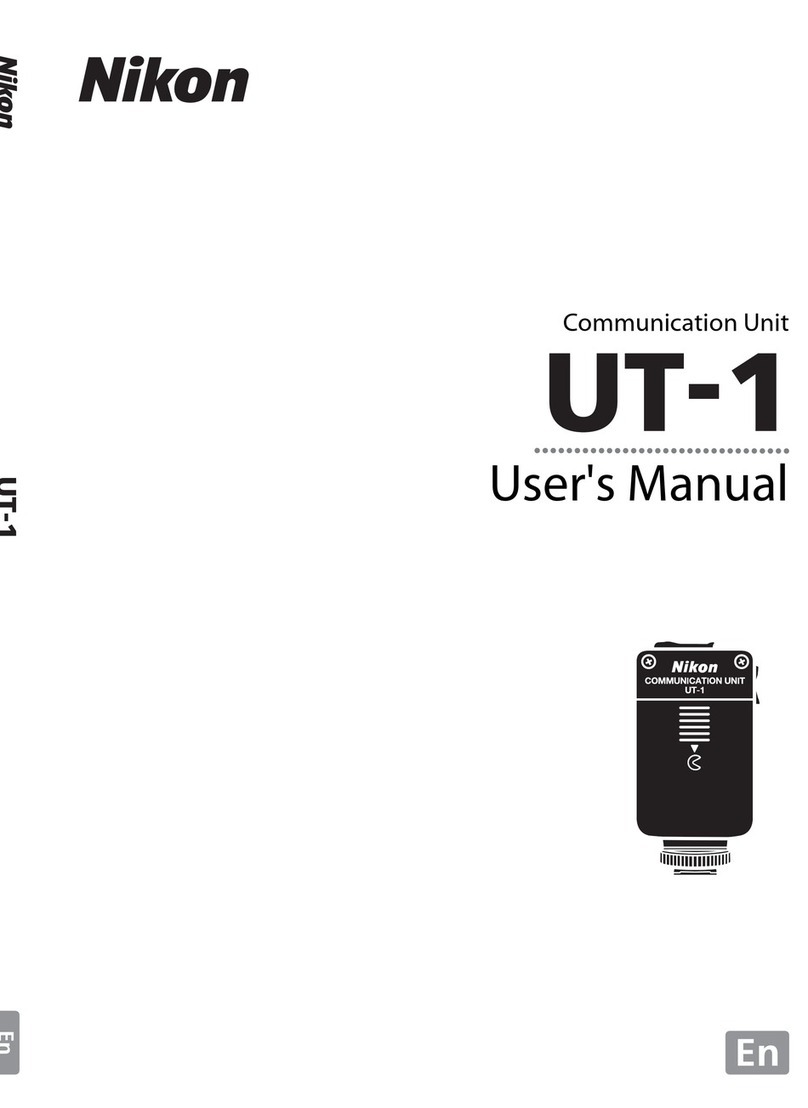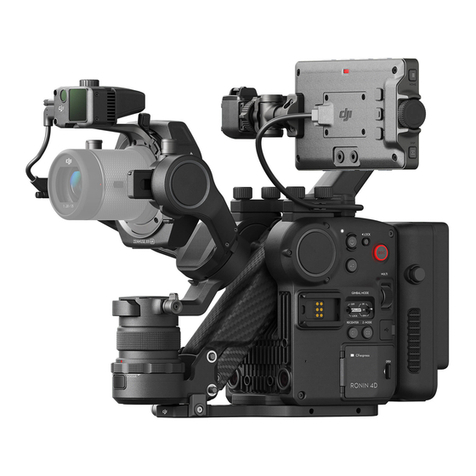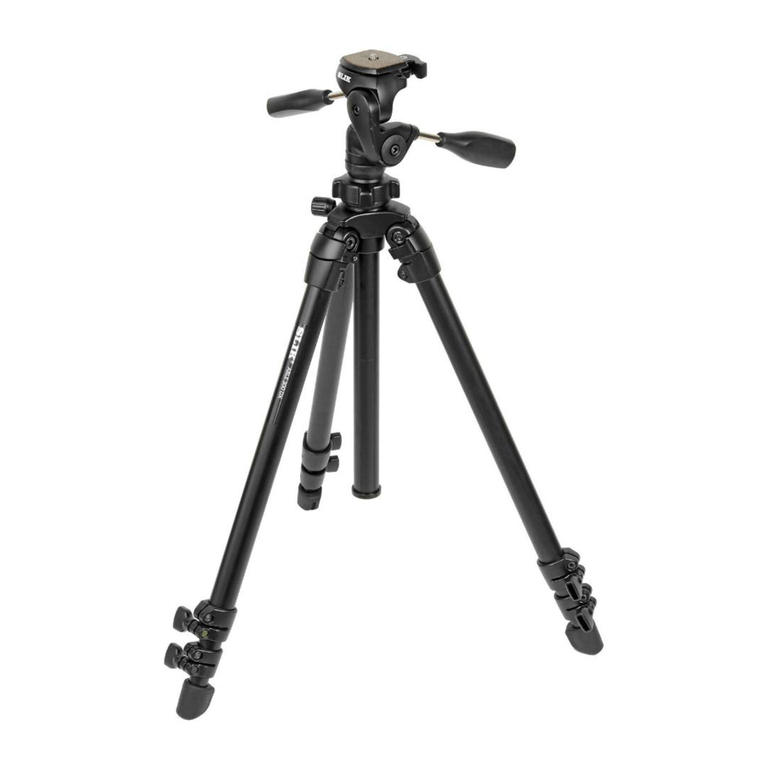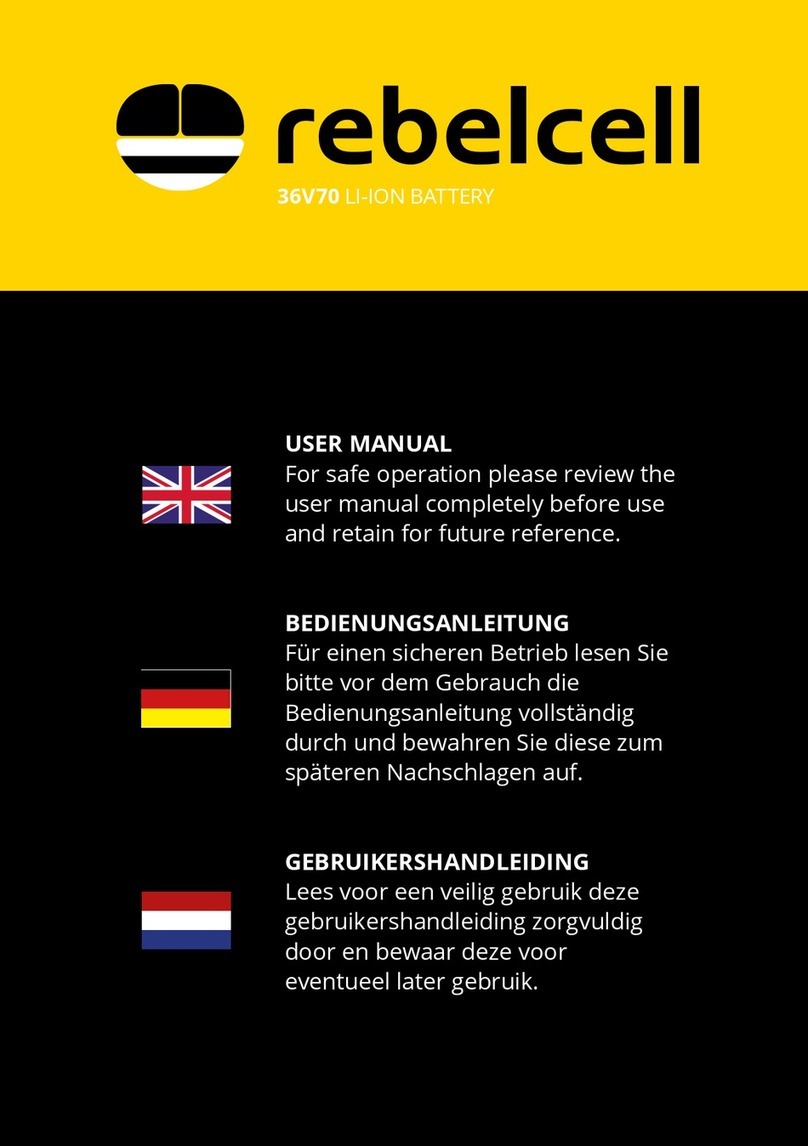
4. Care of the Battery
The battery should always be kept clean and dry to prevent track-
ing currents. Any liquid in the battery tray must be cleaned and dis-
posed of as prescribed. Damage to the insulation of the tray should
be repaired after cleaning, to ensure that the insulation value com-
plies with EN 50272-3 and to prevent tray corrosion. f it is neces-
sary to remove cells, it is recommended to call our Service Dept.
5. Storage
f batteries are taken out of service for extended periods of time,
they should be stored in a fully charged condition in a cool, dry
room (temperature from 0°C to 30°C). To ensure that the battery
is protected from sulphation, the following charging methods are
available:
1. a monthly equalizing charge as in point 2.3
2. float charging at a charging voltage of 2.27 V x the number
of cells. The storage time should be taken into account
when considering the life of the battery.
6. Malfu ctio s
f malfunctions are found on the battery or the charger, our Service
Dept. should be notified immediately. The measurements taken in
point 3.3 will facilitate fault finding and their elimination. A service
contract with us is a good way to detect and prevent potential
problems in advance.
3.2 Weekly
Visual inspection after recharging for signs of dirt and any mechan-
ical damage should be made. f the battery is charged regularly with
an U characteristic curve an equalizing charge must be carried out
(see point 2.3).
3.3 Monthly
At the end of the charge, the voltages of all cells should be meas-
ured and recorded, with the charger switched on. After charging
is completed, the electrolyte density and temperature in all cells
should be measured and recorded. f significant changes from
earlier measurements or differences between the cells are found,
further testing and maintenance by our Service Dept. should be
requested.
3.4 Annually
n accordance with EN 1175-1, at least once per year, the insulation
resistance of the truck and the battery must be checked by an
electrician. The tests on the insulation resistance of the battery
must be conducted in accordance with EN 1987-1. The insulation
resistance of the battery shall be at least 50Ω multiplied by the
nominal battery voltage, in compliance with EN 50272-3. For
batteries up to 20 V nominal voltage the minimum value is 1000 Ω.
Batteries fitted with airlift system:
During the annual maintenance, check the correct operation of
the air pump.
8. Automatic Water Filli g System
8.1 Benefits
Use of the Automatic Filling System ensures that the battery's
electrolyte level is maintained at its nominal value. The charging
gasses escape through ventilation openings of the refilling plugs.
8.2 Operation
Each cell is equipped with an automatic water filling plug that con-
sists of a valve and a float and controls the topping up process to
maintain the optimal electrolyte level. The valve allows the flow of
water into each cell and the float seals the valve when the correct
electrolyte level has been reached. The filling plug shows a white
dot, if the float has sealed the valve. The electrolyte density may be
measured by opening the plug cover and inserting the hydrometer
probe through the plug’s relevant opening. For a fault-free operation
of the water refilling system, please consult the instructions below.
www.systems-sunlight.com
7.1 Reduction of Vehicle Power
Damaged cell:
After charging, the cell voltages should be above
2.1 V and the electrolyte density between 1.27 and 1.30 g/ml.
f a single cell voltage is below 2.0 V and its electrolyte density
below 1.20 g/ml, the cell should be considered damaged. n this
case, contact our Service Dept.
Damaged charger:
f the electrolyte density of all cells after charg-
ing is below 1.27 g/ml, the charger may have a defect. Charge
again and check its functionality or contact our Service Dept.
Frequent electrolyte overspilling:
Reduction of electrolyte density
may be caused by overspilling. Please consult the relevant points
of the present instructions of use for correct filling.
Damaged or loose connections between cells or at the battery’s
end poles:
A loose inter-cell connection reduces the cell voltage
substantially, generating heat and destroying the connector and/or
the cell. Measure cell voltages under load (e.g. lifting system of the
forklift) and check all connections.
Damaged battery socket:
Battery sockets may wear out by
mechanical abuse and excessive heat. Prompt replacement is
required.
7.2 Low Insulation Value due to Defective Battery
Container Coating
Mechanical impacts and/or excessive overspillage of electrolyte
may cause a low insulation value of the battery. n case the battery
tray needs repair or replacement contact our Service Dept.
7.3 High Temperature (>55°C) after Charging
During battery charging, temperature raises by 10°C. f it is more:
- at least one cell has a low voltage and the charger overcharges
the battery
- the charger is defected or has a defect setting of safety cut-offs.
Frequent overcharging reduces service life of the battery.
7.4 Battery Explosion
At the end of charging the battery emits hydrogen. To avoid risk of
explosion, the battery room has to be properly ventilated according
to EN 50272-3. No flames or sparks should be near the battery. For
better ventilation the cover of the battery compartment has to be
open during charging. n case of explosion, inspect all the battery
cells for structural damages and replace damaged cells. Contact
our Service Dept.
7.5 Fire in the Battery
All active parts in a battery are insulated for their life cycle. Due
to poor electrical contact of the terminal cables or inter-cell
connectors, mechanical wear out of the terminal cables or
creeping currents on top of the cells may cause intense heating or
even fire. Shut-off power immediately. After extinguishing the fire,
the battery has to be carefully inspected and damaged parts must
be replaced. Contact our Service Dept.
7. Diag osis a d Problem Solvi g
